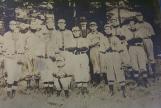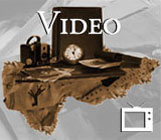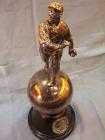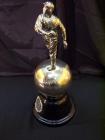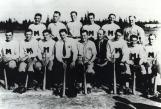15
The Milltown Juniors Baseball Team of 1916 were among the first of the town's early championship teams.18
"In the 1920s, before large crowds, semi-professional teams from the four border towns - St. Stephen, Calais, Milltown - NB and Milltown - Maine - gave furious exhibitions as the St. Croix Baseball League" (Even the Babe. . . by Robert Ashe.). The call to organize a first-class baseball team for the border town was heard as early as March of 1889 (St. Croix Courier), if not before.20
This call was answered in 1930. Before this date St. Stephen had seen solid teams, and outstanding individual players, but no club "in the Maritimes. . .could match the record of the St. Stephen team, which won nine consecutive New Brunswick titles and seven Maritime Championships between 1931 and 1939"( Northern Sandlots: A Social History of Maritime Baseball by Colin D. Howell ).22
The existence of this dynasty was due, in large part, to the efforts of Rendol Whidden (R.W.) Ganong.R.W. was the President of an the Mohawk Amateur Athletic Club, a fraternal organization composed of the area's most successful young men. "The Mohawk club melded St. Stephen's well-to-do and its middle class for bingos, card games and other fund-raising events in support of the tennis, curling, hockey, basketball and baseball teams it sponsored." ( Even the Babe. . . by Robert Ashe)
24
In 1930, the club "entered a team named the Mohawks in the York-Charlotte Baseball League. . . . The Mohawks' uniform was not really one at all: a large dark "M" was sewn haphazardly on the front of white sweatshirts, while pants, shoes and caps had been pilfered from earlier ensembles." ( Even the Babe. . . by Robert Ashe) George Purcell, left-fielder (1931 to 1935) recalls, "They took up a collection and bought us sweat-shirts and black stockings and a black initial ‘M' so we would look more uniform going into the play-offs."The Mohawks team was started with players who had been orphaned when the St. Croix Baseball League collapsed. Other talents joined the roster and the Mohawks won the 1930 New Brunswick Provincial Championship, only to lose it on a technicality. Two of the team members were living in Calais, Maine: one American by birth, the other Canadian-born but living in the United States. A protest was launched by the team beaten by the Mohawks, the Moncton C Cs, and a ruling was issued by the Amateur Athletic Union of Canada. "No American residing in the United States was eligible to play for a Canadian team in Canada." The decree went on to order the series replayed, without the two players, beginning in Moncton. The Mohawks, outraged at this decision, declined to return to Moncton and forfeited the series.
No one was more incensed by this ruling than the President of the Mohawks, R.W. Ganong. Among other forms of protest, he "confronted the athletic union's annual meeting in October of 1930, asserting that St. Stephen and Calais were fundamentally one town. They shared water, electricity, gas, fire departments, street cars, a curling rink, a bowling alley, a country club, employment, schooling and even romance. . . .'It can be seen that only the international boundary prevents the places from being one town'." (Even the Babe. . . by Robert Ashe)
Despite disappointment the Mohawks survived, thrived and continued drawing their players and spectators from Calais. Whether this was due to Ganong's impassioned efforts, to the residence rule (which allowed Calais athletes to temporarily move to St. Stephen and gain eligibility), or to the fact that for most of the 1930s, the Maritime branch of the athletic union would be headed by two St. Stephen men, it's hard to say. In any event, after the 1930 championship, the incorporation of American players was never again an issue.
In fact, the team's bi-national composition perfectly illustrated the atmosphere of accord between the two towns that had been forged during the War of 1812. While "there was always good-natured rivalry between St. Stephen and Calais . . .against other Maritime and New England teams. . . these divisions melted away. St. Stephen and Calais lived baseball together: important games were front-page news in both towns and the players, wherever they came from, were community heroes." (Even the Babe. . . by Robert Ashe). Thus was born a baseball club who would continue to win titles and championships despite changes to the teams' members, coaches, managers, and sponsors.
